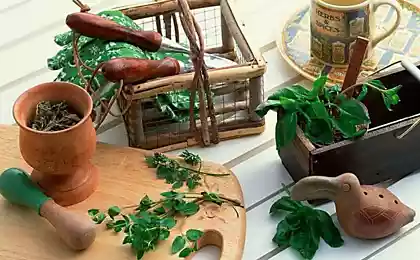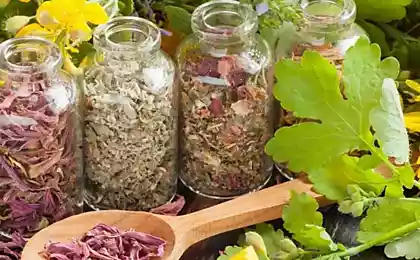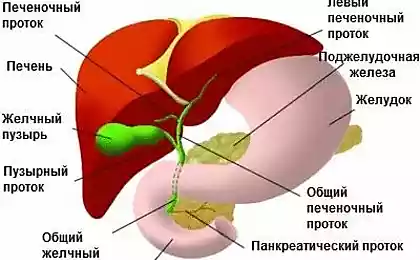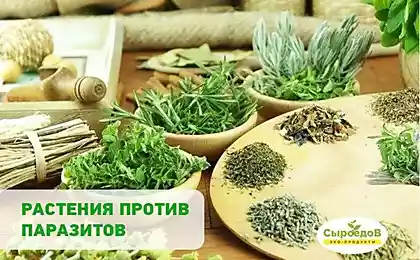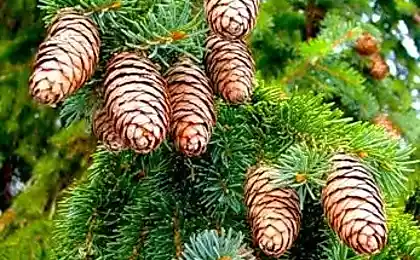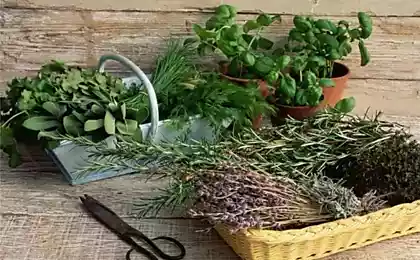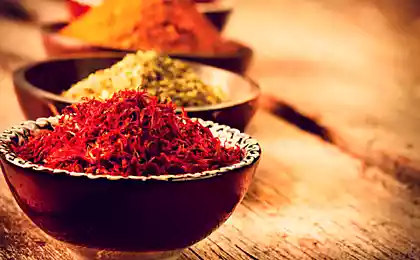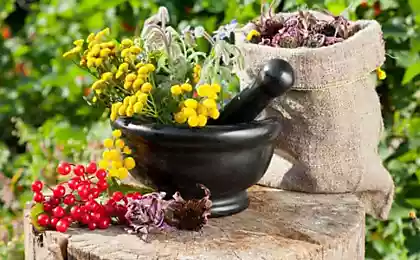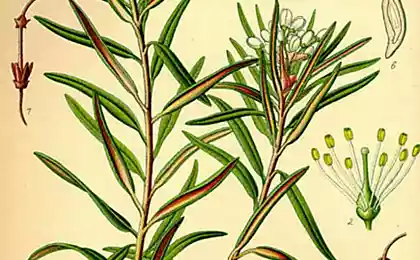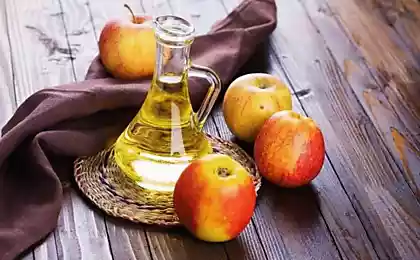600
Little known medicinal properties of licorice known
Its name – Glycyrrhiza – licorice received from the Greek words "glacis" sweet, and "Riza" is the root. Once long ago one of the tribes moved from one place to another, the path was hard, the food is long over, and people were literally dying of hunger, but to pluck unfamiliar plants feared. And then one little boy dug up the root of one of the growing grass and began to eat it. Soon adult heard him cry out – "Sweet root!". Adults, too, began to pull the roots and eat, admiring the taste. It was licorice.
Homeland licorice scientists tend to think of the Mediterranean, Minor and Central Asia. In China, licorice was allegedly brought by merchants along the silk road. And from China, she came to Tibet, where it began to grow. Later licorice appeared in Europe and America.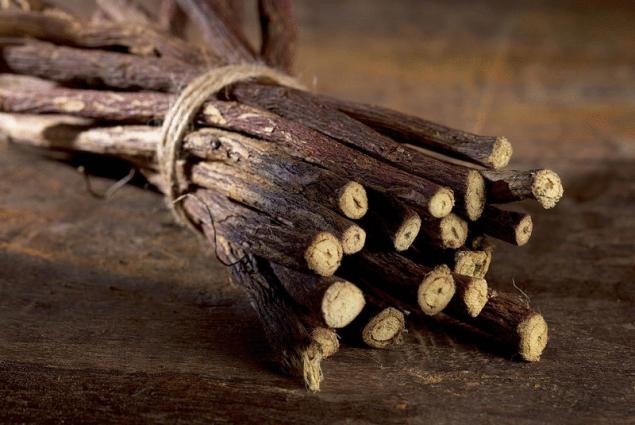
Common licorice, licorice — Glycyrrhiza glabra is a perennial herbaceous plant of the legume family. Popularly it is called licorice or licorice root. The licorice thick woody many-headed rhizome with underground shoots and one penetrating deeply into the soil by the roots.
At the turn of this root has a light yellow color. Direct simple stem rises to a height of 50-100 cm but can reach 2 metres. Leaves are compound, imparipinnate, ovate-cordate, covered with the adhesive spot veins. White-purple, bluish-purple or lilac small, pea-like flowers collected in loose brush stroke in the form of the ear. In a single inflorescence may be from 20 to 30 flowers. Blossoms licorice in June-August. Licorice — a great nectarines, so over her buds spinning many insects. Fruit smooth or hairy beans, flattened laterally, ripen in August-September.
In Russia licorice is growing in the European part, Northern Caucasus, in Dagestan... it can be Found in the steppe grasslands, near rivers. Licorice is cultivated in many countries. Now it is mainly exported to France, Italy, Spain. The licorice grown in the United States. Once her as "Russian goods" were brought from Turkmenistan. And now industrially licorice is grown in Uzbekistan.
About medicinal value of licorice was known in ancient times. So, among the treasures in the tomb of Tutankhamun, archaeologists found a bundle of licorice root. In Ancient Greece and later in Rome licorice was used at high physical exertion and nervous strain. The ancient Greeks for the recovery paid to the Scythian gold. Hippocrates and Galen were called liquorice root — "Scythian root". The roots of the licorice was part of the rations of the soldiers of the army of Alexander the great — their chewed to quench thirst and increase endurance. In China, licorice is also valued since ancient times and prized. Knew about it there in about 2800 BC and used for the treatment of various diseases.
About licorice written in one of the first books appeared in China after the invention of writing – "Book of herbs" — "Ben-Cao". Judging by the extant written documents, first became interested in licorice, and gathered extensive information about it about 3 thousand years BC, the Chinese Prince Shen-nun. It is recognized that the Prince studied not only licorice, but the action of medicinal herbs were tested on humans... Those who have tested licorice lucky. Widely used licorice in their medical practice, the great Arab physician Avicenna. He believed that the juice of licorice improves the potency.
For medical purposes use the roots of licorice. Dig the root in autumn. Experts believe that this should be done in early November, before the frosts, or early spring. The root must not be younger than 3-5 years. Shake the roots dug from the earth and washed with cold water. Dried in the sun. In a purified form they are yellow with a fibrous fracture, taste acrid and cloyingly sweet.
The roots and rhizomes of licorice contain vitamin C, carotene, rutin, sucrose, glucose, starch, mucilage, gum, saponin, flavonoids, glycosides, protein, fat, bitterness, tannin, and glycyrrhetinate glycyrrhizic acid, coumarins, essential oil, yellow pigment, pectin, mineral salts and more. Sweet licorice root makes the contained saponin — glitzirrizin.
Preparations of licorice root have anti-inflammatory, analgesic, protivosudorojnam, expectorant, emollient, enveloping, antispasmodic properties. We get acquainted with the taste of licorice since childhood. Many of you probably remember the sticky sweet syrup that mom gave a cough. Extract and the juice administered in menopause, morning sickness, cancer, asthma, tuberculosis, eczema, psoriasis, hemorrhoids, mushroom poisoning and meat.
When any disease licorice promotes rapid recovery. Licorice root boosts immunity and rejuvenates entire body. It simultaneously refreshes and calms the nervous system.
A decoction of 15 g of dried minced licorice pour 1 Cup of hot water, bring to boil and simmer on low heat for 7-8 minutes, turn off the heat and leave for about 1 hour.
Strain, take 1 tbsp. spoon 4 times a day before meals.
Infusion 1 tablespoon of chopped root pour 1 Cup boiling water, to insist half an hour, strain, take as an expectorant 1 tbsp. spoon 4 times a day.
If licorice root to chew on, the teeth become strong.
Some nutritionists recommend add decoction of licorice in tea, coffee for those who want to lose weight. It replaces sugar and helps normalize metabolism.
Licorice is contraindicated in hypertension, inflammatory liver disease, cirrhosis of the liver and deficiency of potassium in the blood.
The roots of licorice are added to animal feed.
The food industry uses them to sweeten beer, soft drinks, kvass, fillings for chocolates.
In the villages it is added in the pickled apples.
Use licorice is in the manufacture of ink, ink, watercolor paints, dyeing of wool and silk in yellow, brown and blue. And stems made of rope and burlap.
In cosmetics licorice root is used in industrial scale, adding in day and night creams to rejuvenate the face and improve hair growth. At home, a decoction of licorice is used for wiping after the evening washing. Well rejuvenates the skin compress of broth. But it should be done 2-3 times a week.
For silkiness and hair growth
1 tablespoon licorice pour 2 cups of boiling water, boil 10 minutes on slow fire, half an hour to insist, drain. RUB into the roots of the hair and wet the hair. Wear a plastic cap. Wash off after 40-50 minutes. The procedure is carried out 2 times a week for 1.5–2 months. Continue to rinse hair with a decoction after each washing. published
P. S. And remember, only by changing their consumption — together we change the world! ©
Source: gorod.lv
Homeland licorice scientists tend to think of the Mediterranean, Minor and Central Asia. In China, licorice was allegedly brought by merchants along the silk road. And from China, she came to Tibet, where it began to grow. Later licorice appeared in Europe and America.

Common licorice, licorice — Glycyrrhiza glabra is a perennial herbaceous plant of the legume family. Popularly it is called licorice or licorice root. The licorice thick woody many-headed rhizome with underground shoots and one penetrating deeply into the soil by the roots.
At the turn of this root has a light yellow color. Direct simple stem rises to a height of 50-100 cm but can reach 2 metres. Leaves are compound, imparipinnate, ovate-cordate, covered with the adhesive spot veins. White-purple, bluish-purple or lilac small, pea-like flowers collected in loose brush stroke in the form of the ear. In a single inflorescence may be from 20 to 30 flowers. Blossoms licorice in June-August. Licorice — a great nectarines, so over her buds spinning many insects. Fruit smooth or hairy beans, flattened laterally, ripen in August-September.
In Russia licorice is growing in the European part, Northern Caucasus, in Dagestan... it can be Found in the steppe grasslands, near rivers. Licorice is cultivated in many countries. Now it is mainly exported to France, Italy, Spain. The licorice grown in the United States. Once her as "Russian goods" were brought from Turkmenistan. And now industrially licorice is grown in Uzbekistan.
About medicinal value of licorice was known in ancient times. So, among the treasures in the tomb of Tutankhamun, archaeologists found a bundle of licorice root. In Ancient Greece and later in Rome licorice was used at high physical exertion and nervous strain. The ancient Greeks for the recovery paid to the Scythian gold. Hippocrates and Galen were called liquorice root — "Scythian root". The roots of the licorice was part of the rations of the soldiers of the army of Alexander the great — their chewed to quench thirst and increase endurance. In China, licorice is also valued since ancient times and prized. Knew about it there in about 2800 BC and used for the treatment of various diseases.
About licorice written in one of the first books appeared in China after the invention of writing – "Book of herbs" — "Ben-Cao". Judging by the extant written documents, first became interested in licorice, and gathered extensive information about it about 3 thousand years BC, the Chinese Prince Shen-nun. It is recognized that the Prince studied not only licorice, but the action of medicinal herbs were tested on humans... Those who have tested licorice lucky. Widely used licorice in their medical practice, the great Arab physician Avicenna. He believed that the juice of licorice improves the potency.
For medical purposes use the roots of licorice. Dig the root in autumn. Experts believe that this should be done in early November, before the frosts, or early spring. The root must not be younger than 3-5 years. Shake the roots dug from the earth and washed with cold water. Dried in the sun. In a purified form they are yellow with a fibrous fracture, taste acrid and cloyingly sweet.
The roots and rhizomes of licorice contain vitamin C, carotene, rutin, sucrose, glucose, starch, mucilage, gum, saponin, flavonoids, glycosides, protein, fat, bitterness, tannin, and glycyrrhetinate glycyrrhizic acid, coumarins, essential oil, yellow pigment, pectin, mineral salts and more. Sweet licorice root makes the contained saponin — glitzirrizin.
Preparations of licorice root have anti-inflammatory, analgesic, protivosudorojnam, expectorant, emollient, enveloping, antispasmodic properties. We get acquainted with the taste of licorice since childhood. Many of you probably remember the sticky sweet syrup that mom gave a cough. Extract and the juice administered in menopause, morning sickness, cancer, asthma, tuberculosis, eczema, psoriasis, hemorrhoids, mushroom poisoning and meat.
When any disease licorice promotes rapid recovery. Licorice root boosts immunity and rejuvenates entire body. It simultaneously refreshes and calms the nervous system.
A decoction of 15 g of dried minced licorice pour 1 Cup of hot water, bring to boil and simmer on low heat for 7-8 minutes, turn off the heat and leave for about 1 hour.
Strain, take 1 tbsp. spoon 4 times a day before meals.
Infusion 1 tablespoon of chopped root pour 1 Cup boiling water, to insist half an hour, strain, take as an expectorant 1 tbsp. spoon 4 times a day.
If licorice root to chew on, the teeth become strong.
Some nutritionists recommend add decoction of licorice in tea, coffee for those who want to lose weight. It replaces sugar and helps normalize metabolism.
Licorice is contraindicated in hypertension, inflammatory liver disease, cirrhosis of the liver and deficiency of potassium in the blood.
The roots of licorice are added to animal feed.
The food industry uses them to sweeten beer, soft drinks, kvass, fillings for chocolates.
In the villages it is added in the pickled apples.
Use licorice is in the manufacture of ink, ink, watercolor paints, dyeing of wool and silk in yellow, brown and blue. And stems made of rope and burlap.
In cosmetics licorice root is used in industrial scale, adding in day and night creams to rejuvenate the face and improve hair growth. At home, a decoction of licorice is used for wiping after the evening washing. Well rejuvenates the skin compress of broth. But it should be done 2-3 times a week.
For silkiness and hair growth
1 tablespoon licorice pour 2 cups of boiling water, boil 10 minutes on slow fire, half an hour to insist, drain. RUB into the roots of the hair and wet the hair. Wear a plastic cap. Wash off after 40-50 minutes. The procedure is carried out 2 times a week for 1.5–2 months. Continue to rinse hair with a decoction after each washing. published
P. S. And remember, only by changing their consumption — together we change the world! ©
Source: gorod.lv
The secrets of Gestalt therapists — how to improve your communication with people
Bestsellers on parenting for reading parents
